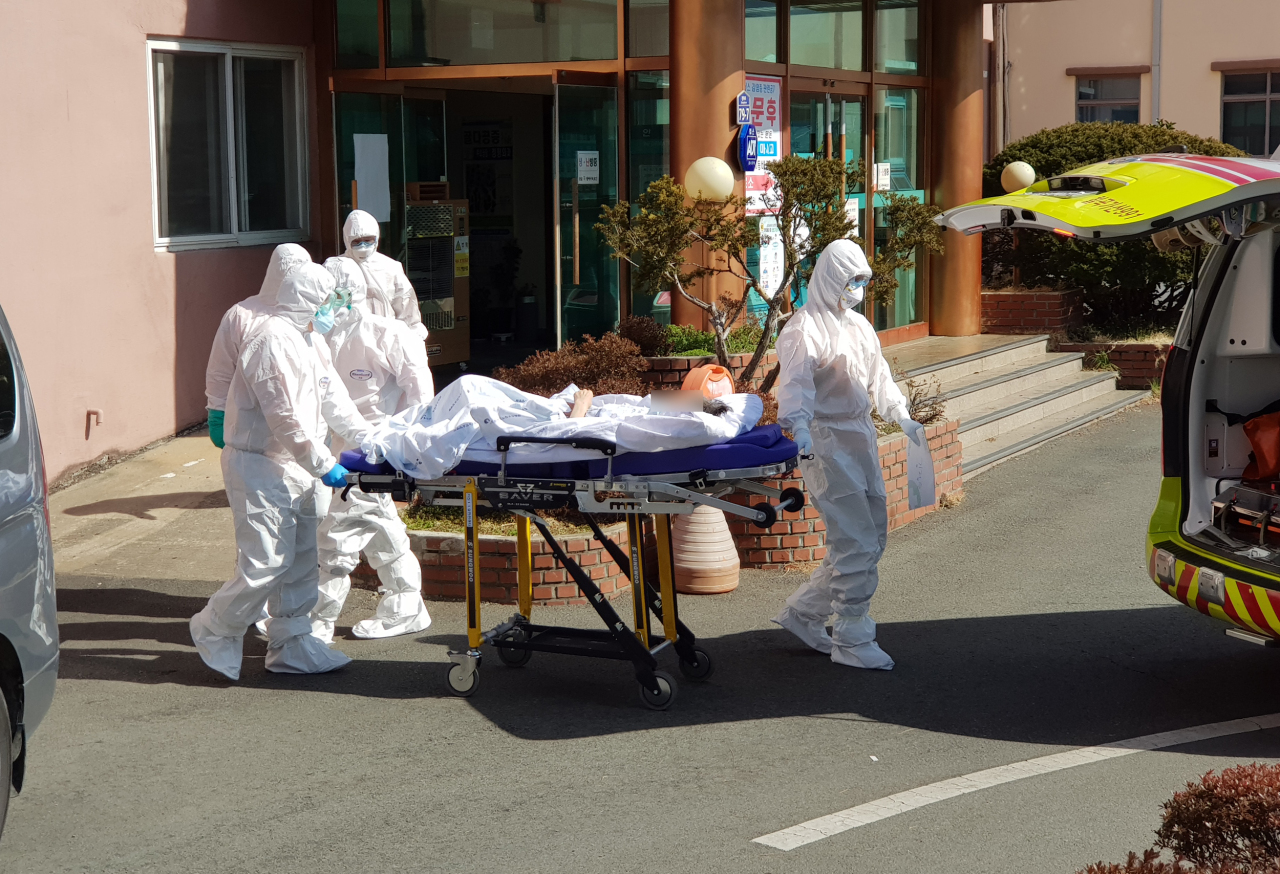Stigmatizing patients feared amid worsening outbreak
‘Shincheonji woman not super-spreader’
By Kim ArinPublished : Feb. 24, 2020 - 16:45

South Korea’s management of COVID-19 infection data has been praised for its transparency, but there are growing concerns over personal information of confirmed patients being publicized.
Some critics say wide publicity does not just violate privacy, but is bad practice in terms of disease control.
Posting patients’ recent travels could deter suspected patients from seeking help due to fears of being stigmatized, conservative politician Lee Jun-seok told The Korea Herald.
“Numbering each patient and disclosing his or her itinerary case by case might have worked when we had fewer cases, but now there seems little point in that,” he said, arguing that the extent of information available to the public should be limited to the places where a patient or patients have visited and when.
Lee said it also risks shifting the blame of a failed containment response to private citizens.
According to a Feb. 7 survey of 1,000 Koreans by a Seoul National University public health lab, respondents said they feared being criticized if they were found to be infected more than they feared contracting the disease without symptoms or coming into contact with infectious persons who had yet to report to authorities.
“To be honest, I’m scared of getting the virus because I don’t want the world to know my whereabouts,” a 28-year-old woman told The Korea Herald.
“I’m not saying people shouldn’t be informed of exposed areas, but some of the details seem unnecessarily published,” she said, referring to a recent case in Gumi, North Gyeongsang Province.
The Gumi office said Sunday the patient in the city’s second case, a 25-year-old woman, was living with her boyfriend, a 24-year-old factory worker.
“I don’t understand how the fact that the patient was in a cohabiting relationship is helpful to anyone in avoiding the disease,” she said.
Following the government’s announcement that the patient in the 31st case was responsible for spreading the disease to other followers of the Shincheonji Church of Jesus, of which she is a member, public criticism erupted over the 61-year-old woman for supposedly causing the mass infection.
But the Korea Centers for Disease Control and Prevention Director Jung Eun-kyeong said Thursday that the 31st patient and other confirmed patients from the church seem to have contracted the virus around the same time from an unidentified infectious agent.
This unfortunately came after the 61-year-old had already been branded a “super-spreader,” and fallen victim to online bashing.
Choi Won-seok, an infectious disease specialist at Korea University Hospital in Ansan, Gyeonggi Province, said based on epidemiological research so far, the patient was not likely to have been the spreader.
“Cases linked to the church are without clear epidemiological links, and the patients appear to have been infected around the same time,” he said. “We don’t know from whom they got the illness yet, just like a lot of the cases that are emerging.”
“She was the first to be identified in a group infection event,” he said, cautioning against naming patients and resorting to a blame game.
“Such multiple, simultaneous or consecutive infections could happen in any given situation where group gatherings are involved when you are dealing with a highly contagious disease like COVID-19,” he said.
By Kim Arin (arin@heraldcorp.com)


















![[KH Explains] Hyundai's full hybrid edge to pay off amid slow transition to pure EVs](http://res.heraldm.com/phpwas/restmb_idxmake.php?idx=652&simg=/content/image/2024/04/18/20240418050645_0.jpg&u=20240418181020)

![[Today’s K-pop] Zico drops snippet of collaboration with Jennie](http://res.heraldm.com/phpwas/restmb_idxmake.php?idx=642&simg=/content/image/2024/04/18/20240418050702_0.jpg&u=)